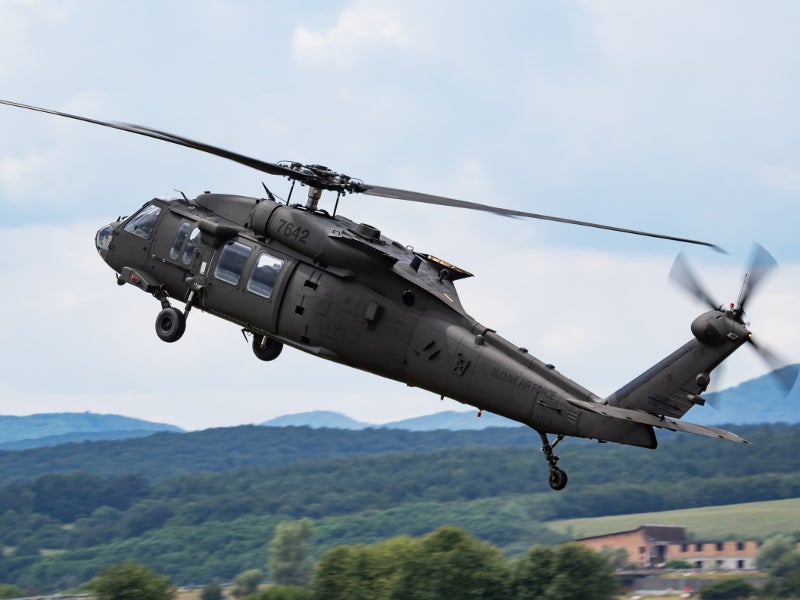Flight Ready: Ensuring Optimum Condition for Your UH 60 Helicopter
Flight Ready: Ensuring Optimum Condition for Your UH 60 Helicopter
Blog Article
Comprehending the Mechanics and Engineering Behind Uh 60 Helicopters
The UH-60 helicopter, commonly recognized as the Black Hawk, stands as a peak of contemporary rotorcraft modern technology, personifying a mix of robust engineering and complex technicians. As we peel off back the layers of the UH-60's design, a globe of elaborate systems and meticulous engineering comes to light.
Background of UH-60 Helicopters
The background of UH-60 helicopters traces back to the late 1970s when the United States Army looked for a sophisticated and versatile utility helicopter to replace its aging fleet. In feedback to this demand, the Sikorsky Aircraft Company established the UH-60 Black Hawk helicopter. Presented in 1979, the UH-60 rapidly became a staple in army procedures because of its impressive capabilities.
The UH-60 was designed to master a selection of goals, consisting of troop transportation, clinical discharge, digital warfare, and unique procedures. Its capacity to adjust to various duties made it an important asset to the united state Military and various other military forces worldwide
For many years, the UH-60 platform has undergone several upgrades and variations to enhance its efficiency and maintain rate with advancing objective requirements. These helicopters have seen extensive solution in disputes such as the Gulf War, Afghanistan, and Iraq, showcasing their integrity and convenience in diverse functional atmospheres. The UH-60's abundant history is a testimony to its long-lasting heritage as a leading utility helicopter.

Engine and Power Systems
Utilizing cutting-edge propulsion modern technology, UH-60 helicopters are outfitted with advanced engine and power systems to make certain optimal efficiency and integrity in a series of functional scenarios. The UH-60, frequently recognized as the Black Hawk, is powered by 2 General Electric T700-GE-701D engines, each capable of providing up to 1,940 shaft horsepower. These turboshaft engines give the necessary thrust for the helicopter to perform its objectives successfully, consisting of troop transport, clinical emptying, and battle assistance.

Blades System and Aerodynamics
Just how do the blades system and aerodynamics of UH-60 helicopters contribute to their functional efficiency and trip capacities? The blades system of the UH-60 helicopter plays a crucial role in supplying lift and propulsion.
Aerodynamics likewise play a vital duty in the performance of UH-60 helicopters. The streamlined fuselage and rotor blade style lower drag, enabling the helicopter to achieve greater speeds and better fuel performance. The wind resistant style of the UH-60 additionally adds to its capability to run in diverse environmental conditions, including high elevations and warm temperature levels.
Avionics and Trip Control Systems

In its detailed coordination with the blades system and aerodynamics of UH-60 helicopters, the avionics and flight control systems develop an essential network of technologies forming the aircraft's functional capabilities. Avionics include the digital systems utilized for interaction, navigating, and keeping an eye on different aircraft functions. In the UH-60, these systems include digital displays, interaction radios, GPS navigation, weather radar, and autopilot systems. site link These avionics systems offer critical information to the pilots, improving situational understanding and making certain secure and efficient procedure of the helicopter.
The flight control systems of the UH-60 are accountable for translating the pilot's inputs right into the appropriate adjustments to the blades system, guaranteeing stable trip and ability to move. These systems include hydraulic actuators, servos, and computer systems that interact to manage the main and tail rotors, along with other trip control surface areas. By specifically managing the helicopter's flight dynamics, these systems make it possible for pilots to execute a large range of missions, from transportation and search-and-rescue to combat operations, with accuracy and confidence.
Function and Applications in Air Travel
The duty and applications of avionics and flight control systems in aeronautics are integral to Click This Link making sure the risk-free and efficient operation of aircraft, consisting of UH-60 helicopters. Avionics systems in UH-60 helicopters include a variety of electronic systems that help in navigation, interaction, tracking, and regulating various aircraft functions. These systems consist of electronic display screens, auto-pilot systems, interaction radios, general practitioner navigating equipment, and climate radar. Flight control systems play a critical role in navigating the helicopter airborne, keeping stability, and guaranteeing precise movements. The fly-by-wire modern technology made use of in modern-day UH-60 helicopters equates pilot inputs right into electronic signals, which are after that interpreted by the flight control computers to readjust the aircraft's control surfaces. In addition, these systems incorporate safety functions such as auto-pilot modes, terrain recognition alerting systems, and stability enhancement systems to improve the general security and functional capacities of the UH-60 helicopters in numerous missions, including troop transport, medical emptying, search and rescue, and aerial firefighting.
Final Thought
In final thought, the UH-60 helicopter is a flexible aircraft with a rich history and progressed design. Its you could try this out engine and power systems, blades system, the rules of aerodynamics, avionics, and flight control systems all function together to make it a trusted and reliable device.
In its intricate sychronisation with the rotor system and aerodynamics of UH-60 helicopters, the avionics and trip control systems develop an essential network of modern technologies shaping the aircraft's functional capabilities.The trip control systems of the UH-60 are liable for translating the pilot's inputs right into the appropriate adjustments to the rotor system, guaranteeing stable trip and ability to move. Avionics systems in UH-60 helicopters incorporate a range of digital systems that help in navigation, interaction, monitoring, and regulating different airplane functions. In addition, these systems include safety and security attributes such as auto-pilot settings, surface awareness advising systems, and stability augmentation systems to enhance the general safety and operational abilities of the UH-60 helicopters in numerous goals, including troop transport, medical discharge, search and rescue, and airborne firefighting.
Its engine and power systems, rotor system, aerodynamics, avionics, and flight control systems all function together to make it a reliable and trusted device.
Report this page